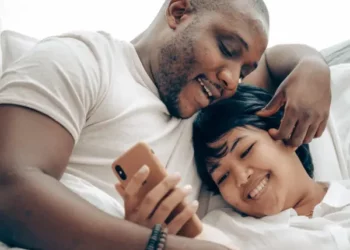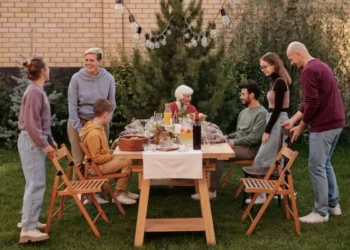For their examination, the specialists overviewed an irregular example of in excess of 1,000 individuals in the territory of Maryland in late June, getting some information about their social separating rehearses, utilization of public transportation, SARS-CoV-2 disease history, and other COVID-19-significant practices. They found, for instance, that those announcing regular public vehicle use were multiple occasions as liable to report a past filled with testing positive for SARS-CoV-2 contamination, while the individuals who revealed rehearsing severe outside social separating were only a 10th as prone to report consistently being SARS-CoV-2 positive.
The examination is accepted to be among the primary enormous scope assessments of COVID-19-pertinent practices that depends on singular level review information, rather than collected information from sources, for example, cellphone applications.
The outcomes were distributed online on September 2 in Clinical Infectious Diseases.
“Our discoveries uphold the possibility that in case you’re going out, you should rehearse social removing to the degree conceivable in light of the fact that it appears to be emphatically connected with a lower possibility of getting tainted,” says study senior creator Sunil Solomon, MBBS, PhD, MPH, a partner teacher in the Bloomberg School’s Department of Epidemiology and a partner educator of medication at Johns Hopkins School Medicine. “Studies like this are likewise moderately simple to do, so we think they can possibly be helpful devices for recognizable proof of spots or populace subgroups with higher weakness.”
The tale Covid SARS-CoV-2 has contaminated almost 27 million individuals around the globe, of whom about 900,000 have kicked the bucket, as per the World Health Organization. Without an antibody, general wellbeing specialists have underscored practices, for example, remaining at home, and wearing veils and keeping up social removing while in broad daylight. However there hasn’t been a decent method to screen whether – and among which gatherings – such practices are being followed.
Solomon and partners, including first creator Steven Clipman, a PhD up-and-comer in the Bloomberg School’s Department of International Health, immediately got to willing overview members through an organization that keeps up an enormous cross country pool of likely members as a business administration for statistical surveying. The 1,030 individuals remembered for the examination were all living in Maryland, which has logged in excess of 113,000 SARS-CoV-2 affirmed cases and almost 3,700 affirmed passings, as per the Maryland Department of Health.
The specialists asked the review members inquiries about late travel outside the home, their utilization of veils, social removing and related practices, and any affirmed disease with SARS-CoV-2 either as of late or by any means.
The outcomes demonstrated that 55 (5.3 percent) of the 1,030 members had tried positive for SARS-CoV-2 disease whenever, while 18 (1.7 percent) detailed testing positive in the fourteen days before they were overviewed.
The scientists found that while considering all the factors they could assess, investing more energy in broad daylight places was firmly connected with having a background marked by SARS-CoV-2 contamination. For instance, a contamination history was about 4.3 occasions more normal among members who expressed that they had utilized public transportation multiple occasions in the earlier fourteen days, contrasted with members who expressed they had never utilized public transportation in the fourteen day time frame.
A disease history additionally was multiple times more normal among the individuals who detailed having visited a position of love at least multiple times in the earlier fourteen days, contrasted with the individuals who revealed visiting no spot of love during the period. The review didn’t recognize visiting a position of love for a strict help or different purposes, for example, a gathering, day camp or feast.
On the other hand, the individuals who revealed rehearsing social separating outside “consistently” were just 10 percent as prone to have a SARS-CoV-2 history, contrasted with the individuals who announced “failing to practice” social removing.
An underlying, generally straightforward examination connected numerous different factors to SARS-CoV-2 contamination history, including being Black or Hispanic. However, a more complex, “multivariable” investigation proposed that a significant number of these obvious connections were to a great extent because of contrasts in development and social separating.
“At the point when we balanced for different factors, for example, social separating rehearses, a ton of those basic affiliations disappeared, which gives proof that social removing is a compelling measure for decreasing SARS-CoV-2 transmission,” Clipman says.
The information demonstrated a more noteworthy reception of social removing rehearses among certain gatherings who are particularly defenseless against genuine COVID-19 sickness, recommending that they were moderately mindful of their weakness. For instance, 81 percent of more than 65 members revealed continually rehearsing social removing at open air exercises, while just 58 percent of long term olds did as such.
The outcomes are steady with the overall population wellbeing message that veil wearing, social separating, and restricting travel at whatever point conceivable lessen SARS-CoV-2 transmission. The specialists recommend, however, that reviews, for example, these, utilizing comparably fast studies of focused gatherings, could likewise become valuable instruments for anticipating where and among which bunches irresistible maladies will spread most rapidly.
“We did this investigation in Maryland in June, and it appeared in addition to other things that more youthful individuals in the state were less inclined to diminish their contamination hazard with social separating – and after a month a huge extent of the SARS-CoV-2 diseases identified in Maryland was among more youthful individuals,” says Solomon. “Thus, it focuses to the chance of utilizing these brisk, cheap overviews to foresee where episodes will happen dependent on practices, and afterward assembling general wellbeing assets likewise.”
Solomon and his group are currently directing comparable studies in different states and are examining the reviews’ potential as prescient epidemiological devices.
Backing for the examination and for a portion of the individual analysts originated from the Johns Hopkins COVID-19 Research Response Program, the Burroughs Wellcome Fund, and the National Institutes of Health















